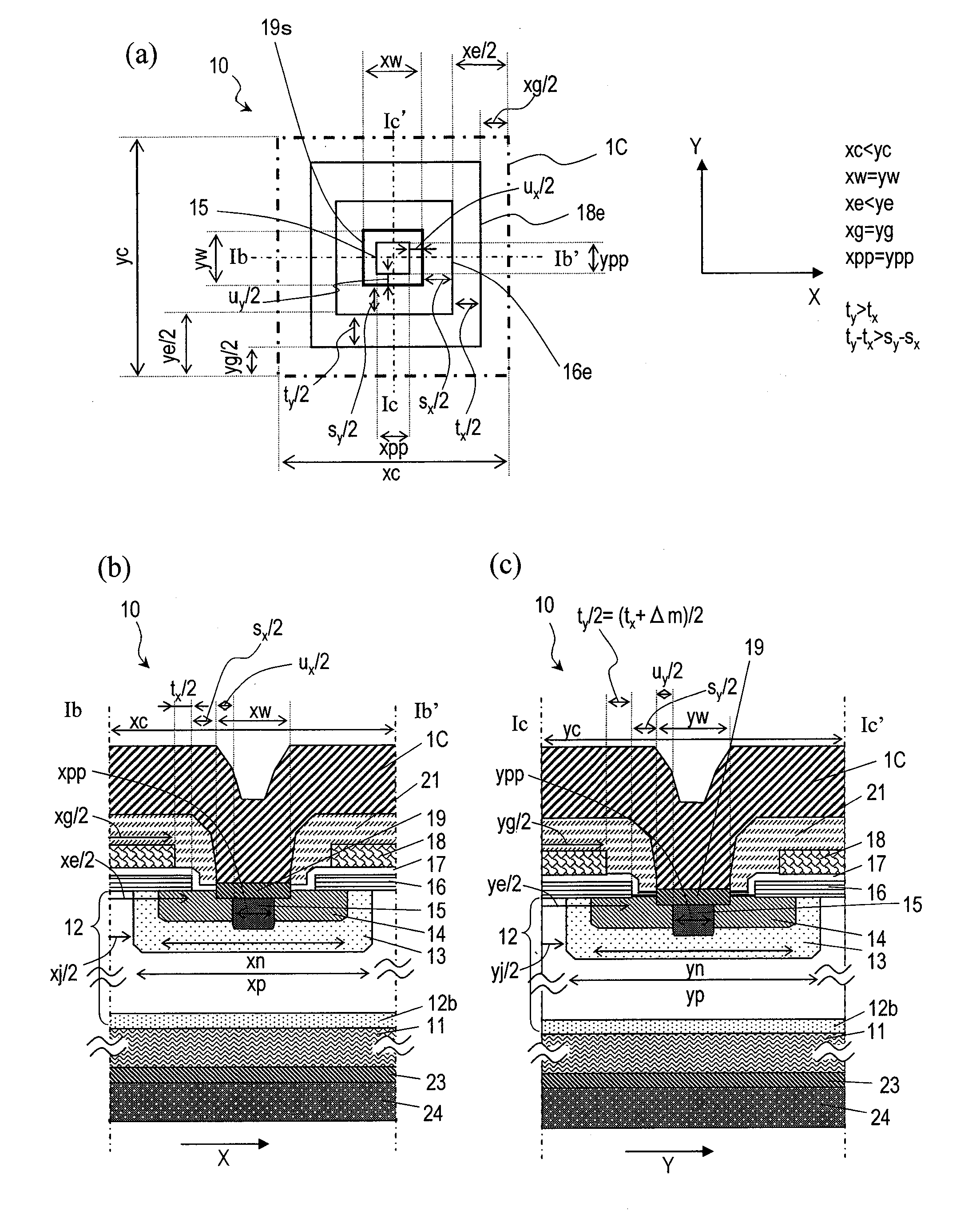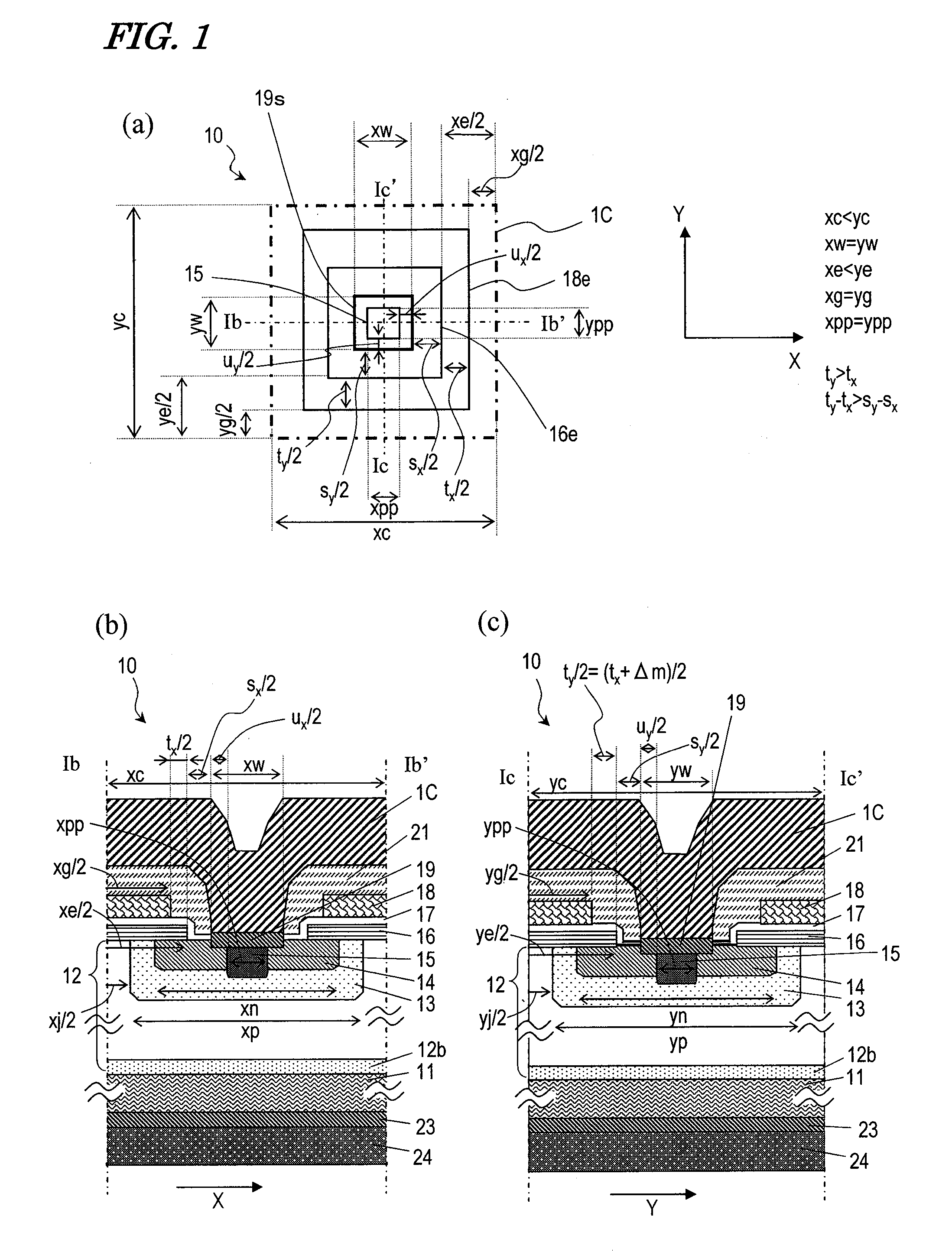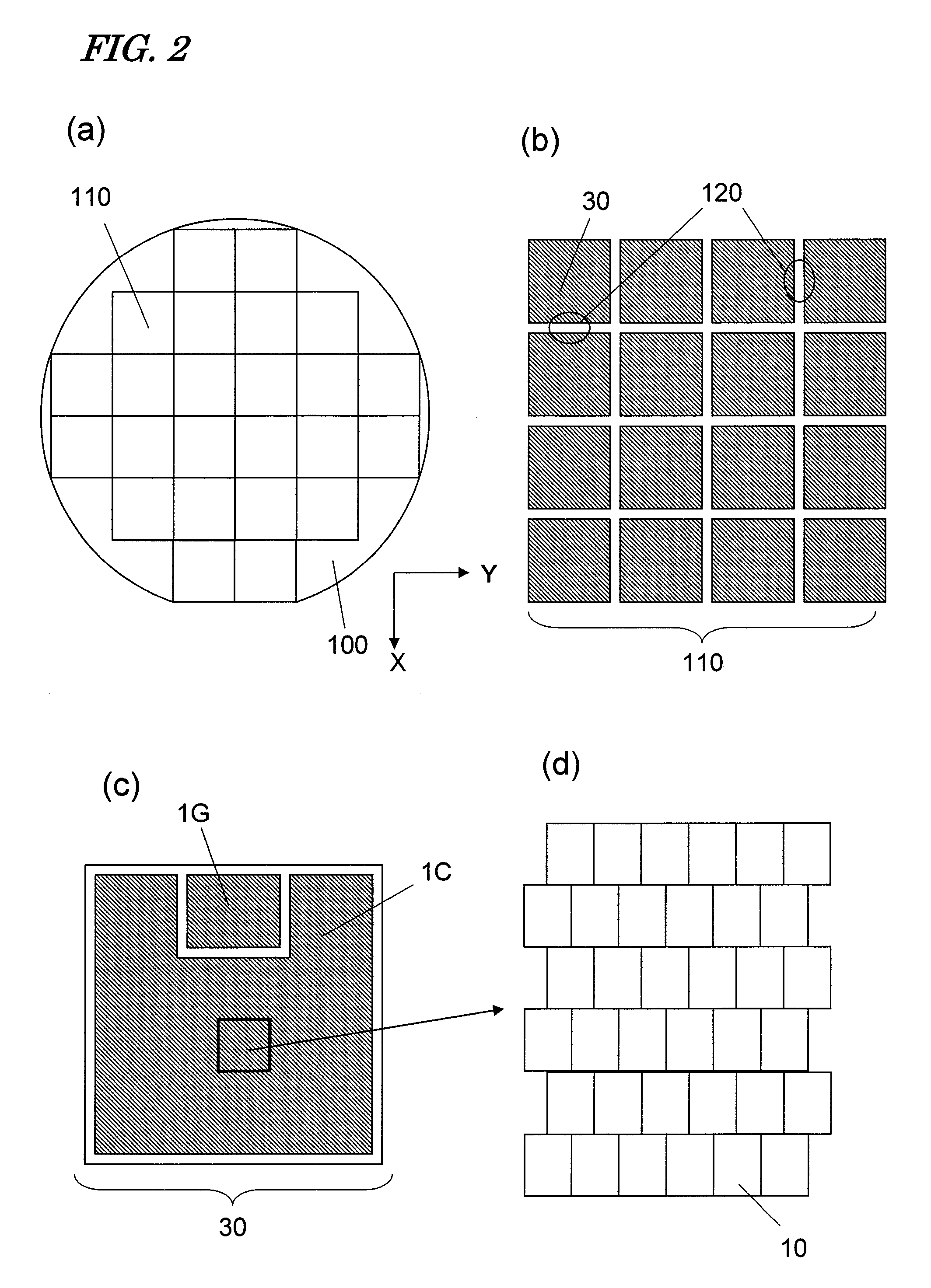Semiconductor device
- Summary
- Abstract
- Description
- Claims
- Application Information
AI Technical Summary
Benefits of technology
Problems solved by technology
Method used
Image
Examples
embodiment 1
[0065]Hereinafter, a first preferred embodiment of a semiconductor device according to the present invention will be described with reference to FIGS. 1 and 2. The semiconductor device of this preferred embodiment is a vertical MOSFET that has been fabricated on an off-cut semiconductor substrate, and typically consists of a number of unit cells that are arranged two-dimensionally.
[0066]FIGS. 1(a) through 1(c) are schematic representations illustrating a unit cell of the semiconductor device of the first preferred embodiment. Specifically, FIG. 1(a) is a plan view illustrating a unit cell of the semiconductor device of this preferred embodiment, FIG. 1(b) is a cross-sectional view of the unit cell as viewed on the plane Ib-Ib′, and FIG. 1(b) is a cross-sectional view of the unit cell as viewed on the plane Ic-Ic′. On the other hand, FIGS. 2(a) through 2(d) are schematic representations illustrating the relation between a semiconductor substrate in the shape of a wafer (which will be...
embodiment 2
[0152]Hereinafter, a second specific preferred embodiment of a semiconductor device according to the present invention will be described with reference to the accompanying drawings.
[0153]FIGS. 7(a) through 7(c) are schematic representations illustrating a semiconductor device as a second preferred embodiment of the present invention. Specifically, FIG. 7(a) is a plan view illustrating a unit cell of the semiconductor device of this preferred embodiment, FIG. 7(b) is a cross-sectional view of the unit cell as viewed on the plane VIIb-VIIb′, and FIG. 7(c) is a cross-sectional view of the unit cell as viewed on the plane VIIc-VIIc′. The relation between the unit cell and the semiconductor bulk substrate of this preferred embodiment is just as what has already been described with reference to FIG. 2. It should be noted that the planes VIIb-VIIb′ and VIIc-VIIc′ are parallel to the X and Y directions, respectively, in the semiconductor bulk substrate 100 shown in FIG. 2(a).
[0154]The unit ...
PUM
 Login to View More
Login to View More Abstract
Description
Claims
Application Information
 Login to View More
Login to View More - R&D
- Intellectual Property
- Life Sciences
- Materials
- Tech Scout
- Unparalleled Data Quality
- Higher Quality Content
- 60% Fewer Hallucinations
Browse by: Latest US Patents, China's latest patents, Technical Efficacy Thesaurus, Application Domain, Technology Topic, Popular Technical Reports.
© 2025 PatSnap. All rights reserved.Legal|Privacy policy|Modern Slavery Act Transparency Statement|Sitemap|About US| Contact US: help@patsnap.com



